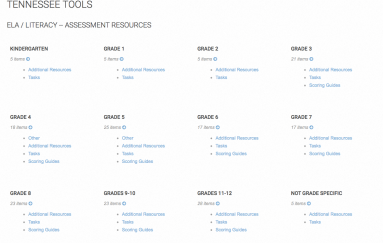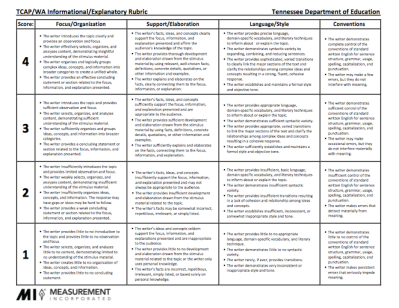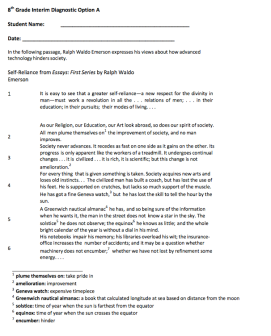
As this semester winds down and you’re getting ready for the spring semester, now is a great time to take a second look at TNReady standards and resources to ensure your units and lessons for the spring are closely aligned.
Remember that all resources for educators are now on eduToolbox and TNCore is no longer used. Tennessee tools for ELA Literacy Assessments are available by grade here.  Once you select a grade, you will see additional resources, tasks, and scoring guides for your grade.
Once you select a grade, you will see additional resources, tasks, and scoring guides for your grade.
These links aren’t the easiest to navigate and there’s almost too much information available. The vast majority of resources are downloadable documents, and a large amount are rubrics and scoring guides.
There aren’t nearly as many item samplers and practice questions to use in your classroom, which I’ve found to be the most valuable state resources. Hopefully, there’s more to come in upcoming years. For now, I’m highlighting the best resources available through EduTools.
This list is specific to 7th grade, but there are similar resources across all grade levels:
Informational/Explanatory Rubric

How to Use in your Classroom:
- Give to students to use in peer-reviews and self-assessments of writing
- Review the different scoring categories with students so they understand how their writing will be assessed
- Make it a habit of using the names of the scoring categories in your daily instruction
- Example: When teaching a skill-based lesson on prepositions, make reference to the Conventions category of the writing rubric and give students concrete examples of how they can use prepositions to improve their writing
- Show students examples of essays with different scores and examine what differentiates the writing
- Follow the same protocol for the Narrative Rubric and the Opinion/Argument Rubric
Literacy Toolkit
How to Use in Your Classroom:
- Includes 8 Interim Assessments with passages, multiple-choice questions, and prompts from Pages 9-63
- You can use these as interim assessments or extract questions for your own assessments, lessons, or bellringers
- Given the lack of item samplers and practice tests this year, this is a great resource
- Page 5 includes an overview of other resources where teachers can find assessment questions
- Here are quick links to some of the resources featured:
Practice Writing Task: Informational Texts
- 2 practice tasks and 4 texts
- Use as a practice writing assessment
- I’ve found it incredibly important to provide students with several opportunities to practice reading a response and completing an on-demand writing task
- This is a tough exercise for anyone, so building the muscle memory of completing this task in ~45 minutes is critical
- Use the informational texts to improve reading comprehension on informational texts
- Additional Practice Writing Tasks:
For more no-prep TNReady-aligned resources, check out my Teachers Pay Teachers store, which includes assessments, lessons, projects, and more.




